Pulpitis
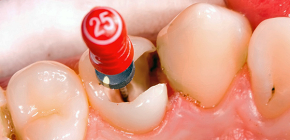
Often, after the treatment of pulpitis, the patient is surprised to find that the tooth for some reason continues to hurt - there can be pain when pressing on the tooth, biting it, or it can ache by itself without any external influence. It would seem that there is nothing to be ill, because the dental nerve was removed! Why, then, does the tooth continue to hurt, how long it will last and, most importantly, what to do in such a situation? Let's understand ...
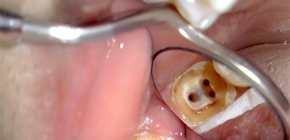
Pulpit three-channel tooth - a phenomenon not only unpleasant, but also often very sensitive to the wallet of a person with average incomes. Let's take a closer look at why it is more difficult and more expensive to treat three channels than one or two, and also what is the pricing policy for the treatment of pulpitis in various dental institutions today ...
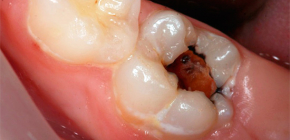
Does the dentist need a pulpit classification? On the one hand, the first systematization of pulpitis appeared about 90 years ago with the aim of helping the practitioner in determining the diagnosis based on the methods and means that were scarce at that time that were at hand. With the modern level of equipment in the cabinets, it probably does not make sense to split the pulp into types and subspecies, but it is sufficient to simply distinguish it from caries and periodontitis using instruments. Well, each dentist decides for himself whether the pulpitis classification used in his work has a practical meaning, or, on the contrary, only complicates life. Here we will talk further about these classifications of pulpitis ...
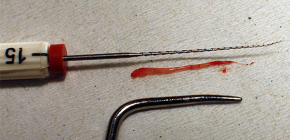
Removal of a nerve from a tooth is a very important procedure, which, unfortunately, does not always go smoothly for the patient. Improper preparation for work with the “nerve” and medical errors can lead to serious consequences, ranging from terrible pain during and after extraction of the pulp, and ending with bleeding from a tooth and a broken and forgotten tool in the canal.Why do you need to remove the nerve from the tooth, how it happens and what problems you may have to wait on this path - we will talk about this later and talk more ...
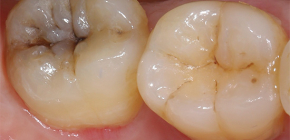
People who had to feel the symptoms of purulent pulpitis on themselves usually do not forget the experienced sensations. And this is due to the fact that due to the inflammatory reaction inside the tooth and the compression of the neurovascular bundle by purulent exudate, severe pain occurs, which often radiates to different parts of the face, upper or lower jaw, to the head. It is the absence of a clear localization of pain that creates at the dentist’s stage of diagnosis serious problems in determining pulping teeth. From here and the mass of ridiculous cases when healthy teeth are reamed or removed by mistake. About all these points, as well as what the patient should and should not do in such a situation, let's talk.

Chronic gangrenous pulpitis is associated with the course of irreversible necrosis of the pulp inside the root canals of the tooth, and it can be cured only by removing the decomposing tissues of the neurovascular bundle.The transformation of “living” tissue into pus is a very unpleasant tendency, since there is a great risk that all this content will be directed towards the root apex and out into the tissues surrounding the tooth, where it will form either a fistulous passage through which pus will pour into the oral cavity. , or "flux" on the gums. Therefore, gangrenous pulpitis is considered to be a borderline form, when there is only one step left before periodontitis and diffuse purulent inflammation ...

Chronic fibrous pulpitis does not cause acute and unbearable pains, creating the effect of imaginary well-being. As a rule, in a short period of time, the structural degenerations of the “nerve” inside the tooth end with gangrene (necrosis) of all or part of the pulp with the formation of pus and its exit to the side of the gum. If you say that this is an undesirable phenomenon - it is not to say anything, since such suppuration is fraught with very dangerous complications. That is why it is so important to catch a tooth in the stage of fibrous pulpitis in time to do everything necessary to save it ...
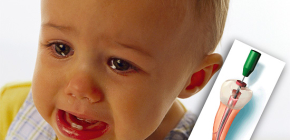
Irresponsible parents of babies are still sure that there is no sense in treating carious baby teeth, as they will fall out anyway. When at the most inappropriate moment, for example, on a holiday, the child suddenly begins to complain of a sharp toothache, then moms and dads have to choose: either to stuff the baby with pills (“chemistry”) for pain relief, or to go to a children's dentist for emergency care. You should know that the pulpitis in the milk teeth develops quickly, often leading to festering gums in just a day. In Russia, deaths from complications of pulpitis in children — abscesses, cellulitis, sepsis — are annually recorded. Let's look at how pulpitis of milk teeth is treated in modern dental clinics, as well as what are possible complications and medical errors and how it can threaten a child.
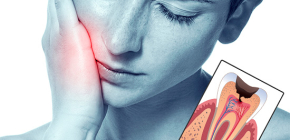
In most cases, severe throbbing pain in the tooth indicates the development of pulpitis. In such a situation, in no case can one hope that the pain pills will help to completely solve the problem, and the pain will gradually disappear.An urgent need to treat the tooth, not bringing to the complications of pulpitis, some of which may even threaten a person’s life. Modern dentistry allows high-quality instrumental and instrumental treatment of pulpitis using new techniques and almost without pain (especially when compared with Soviet times). What is the advantage of modern methods of treatment, what they consist of and what are the principles of pricing for the treatment of pulpitis - this will be discussed further.
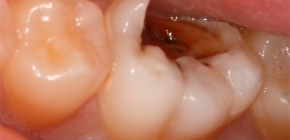
Some people seriously believe that if a sharp toothache has passed, it means that the tooth has “cured” itself. In fact, serious structural changes are taking place inside the tooth that are not visible to the eye. Often the result is the development of chronic pulpitis, which is a very insidious disease. What is chronic pulpitis, what symptoms does it show, how is it treated and how to prevent its complications further and will be discussed.
"Pulpit" - how much of this word ...
Few of us have not experienced all the "charms" of toothache. However, toothache is different, and, oddly enough, but many people sometimes try not to pay attention to it, hoping that the tooth is more pain, and it will pass by itself. Well, this approach is a direct path from deep caries to pulpitis, when the pain is already moving, so to speak, to a whole new level.
To put it simply, pulpitis is an inflammation of the dental “nerve” (pulp), which until then was reliably protected by the walls of the tooth, but due to a gradual increase in the depth of the carious cavity, the infection still penetrated the pulp chamber. The inflamed nerve swells, increasing in volume, and in addition to this can be compressed by purulent exudate. In the aggregate, all this often leads to severe pain, when a person literally cannot find a place for himself, and is forced to make an appointment with a dentist already for emergency care.
So if suddenly a relatively little disturbing tooth suddenly began to “delight” you with acute and long-lasting pain, then it’s time to take hold of the mind - some painkillers do not get rid of here, as urgent treatment is required. Treatment of pulpitis is almost always associated with the need to remove pulp from a tooth, so it would be much better to heal caries at one time than to receive a dead tooth without a “nerve” after treatment.
However, pulpitis, too, are different. Imagine, for example, a situation where a tooth is very sore, but which one is not clear, because the whole side of the dentition can hurt, and sometimes the pain even goes to the opposite jaw. In such cases, the dentist can easily cure a relatively healthy tooth by removing a nerve from it, and then discover that it “missed”. And it happens, especially in budget clinics.
Information about all these and many other interesting practical nuances related to pulpitis and its treatment can be found in this section of the site. In addition, the characteristic symptoms of various types of pulpitis are described in detail, as well as what can you expect in the dentist’s office during treatment.
We hope that the study of this information will help you to better understand the essence of the problems associated with pulpitis, and, if necessary, to approach its treatment as consciously and fully as possible with what you are waiting for.
